I will be exhibiting Let This Be A Sign in the XI Edition: WORK of the International Festival of Rome. The festival is curated by Marco Delogu with Alessandro Dandini de Sylva.
My work will be in the exhibition – Camera Work, alongside that of Roger Ballen, Yto Barrada, Claire Chevrier, Raphaël Dallaporta, Joseph Koudelka, Chris Killip, Fosco Maraini, Nina Poppe, Lars Tunbjörk and Florian van Roekel.
Visit their Facebook page here and festival blog here for more details.
Here’s some general information about the theme:
The 2012 edition of FOTOGRAFIA – Rome International Photography Festival is on its way, with a project that confirms the event’s growing prestige and international scope, promoting contemporary photography in its various forms and languages and valorising up-and-coming talents with increasingly concrete attention to original works.
The theme of the 11th edition will be “work”, a keyword in the history of photography and recent years, reinterpreted with great attention to the differences and changes in the languages of photography and contemporary work. The Festival, in its new MACRO version, has thus chosen a classic theme of 20th-century documentary photography and revives it, with a return to the central role of man, taking up a challenge that involves new languages and new narratives in photography.
What remains of “20th-century” work? Its “vision”, which was often also mythological, full of physical exertion and large masses, has changed and in many cases endures alongside more sophisticated, often solitary, technological kinds of work that are frequently difficult to transform into visions. How do these old visions marry the new ones? What unites them? Perhaps some of the answers to these questions contain a global vision of the world and a vision of photography that we consider the most effective tool for the analysis of contemporary society and its languages.
Let This Be A Sign is featured in the July issue of Creative Review iPad app (which you can download here) and the British Journal of Photography (which you can download here).
The Credit Crunch Lexicon is a text-based work, which forms part of my exhibition Let This Be A Sign, at Swiss Cottage Gallery. The work draws upon the diversity of economic, political and philosophical terminology that has now become part of our vernacular; the economic crisis has moved terminology and jargon from the business pages on to the front pages of our newspapers, radios and TV sets.
Arranged alphabetically to create a form of concrete poetry, the words and phrases scrutinize the miasma of rhetoric, hyperbole and sometimes, contradictory terms used by politicians, economists, protesters and journalists to describe the economic downturn.
I collated the text from political speeches, papers from the governor of the Bank of England, newspaper headlines, protest poster slogans and economic reports, all of which reference the economic situation from 2007 to 2012. In total there are 5841 words/phrases starting with ‘A CRISIS IS A TERRIBLE THING TO WASTE’ and finishing with ‘ZEROFLATION’. The work is ongoing.
You can download a pdf with all of the words here.
Installation shots of the Credit Crunch Lexicon at Swiss Cottage Gallery, London, June 2012:
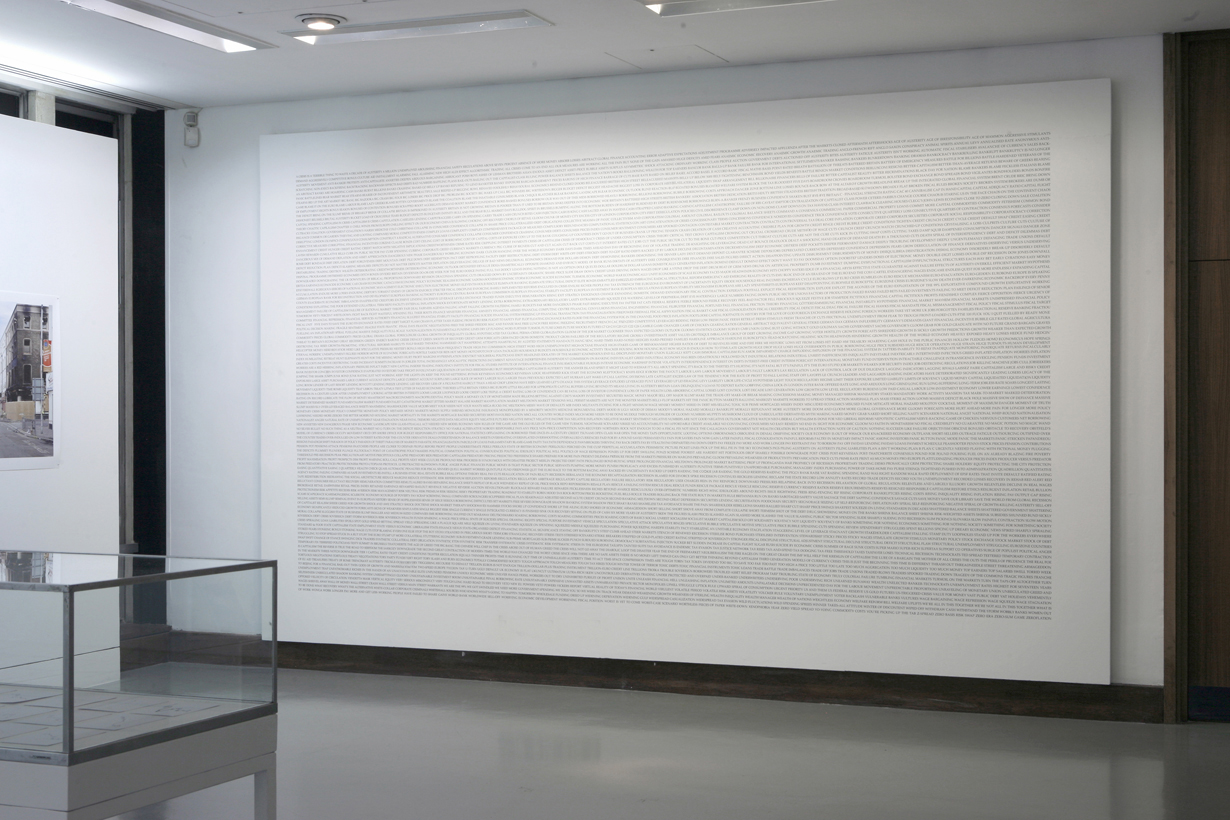
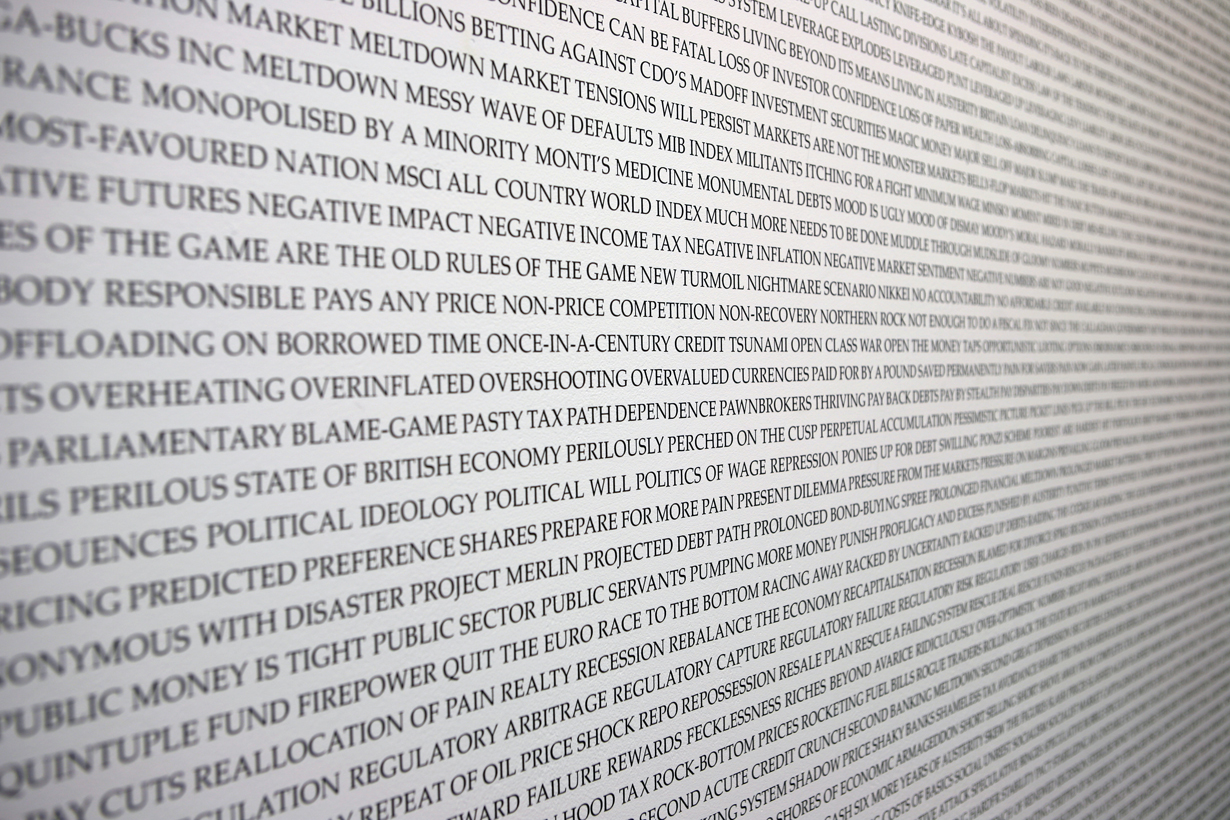
I am exhibiting a new body of work as part of the London Festival of Photography running throughout June. Let This Be A Sign is on show at the Swiss Cottage Gallery and explores the economic, political and social effects of the recent UK recession.
Here are some installation shots-
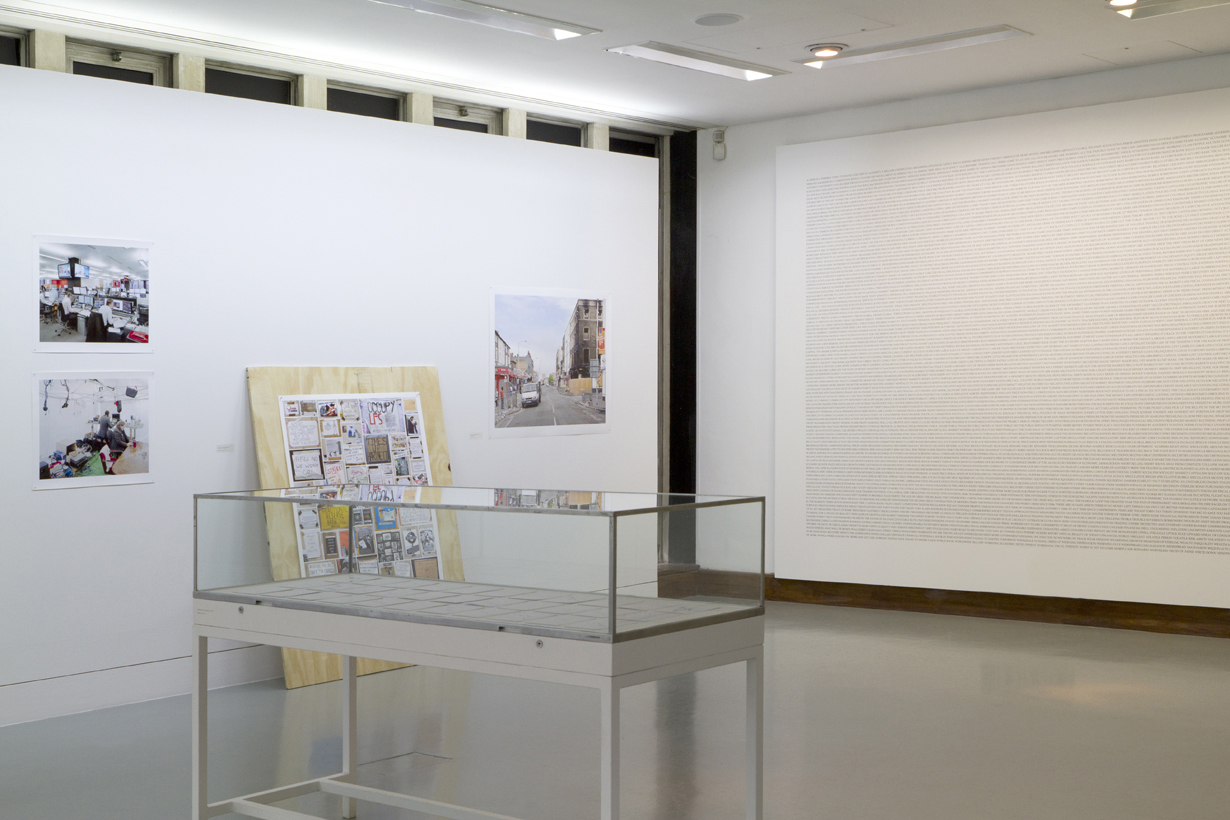
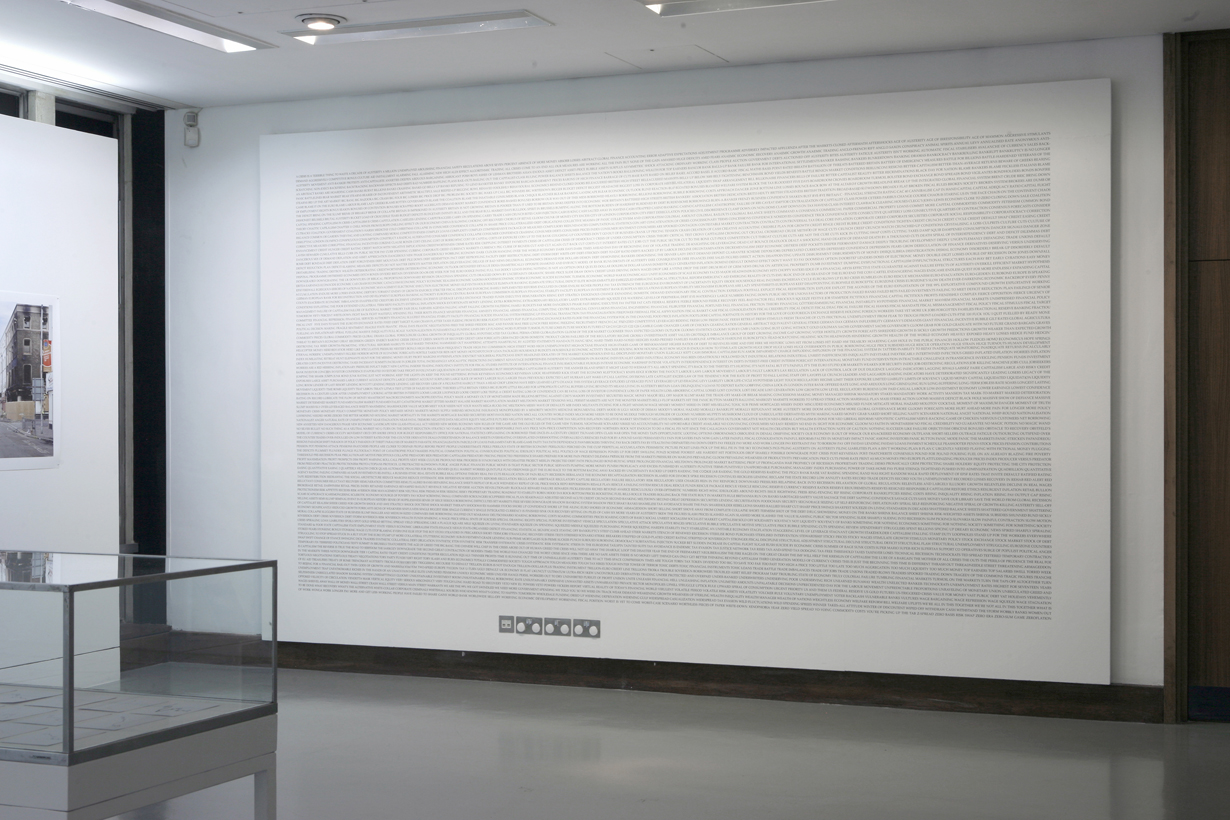
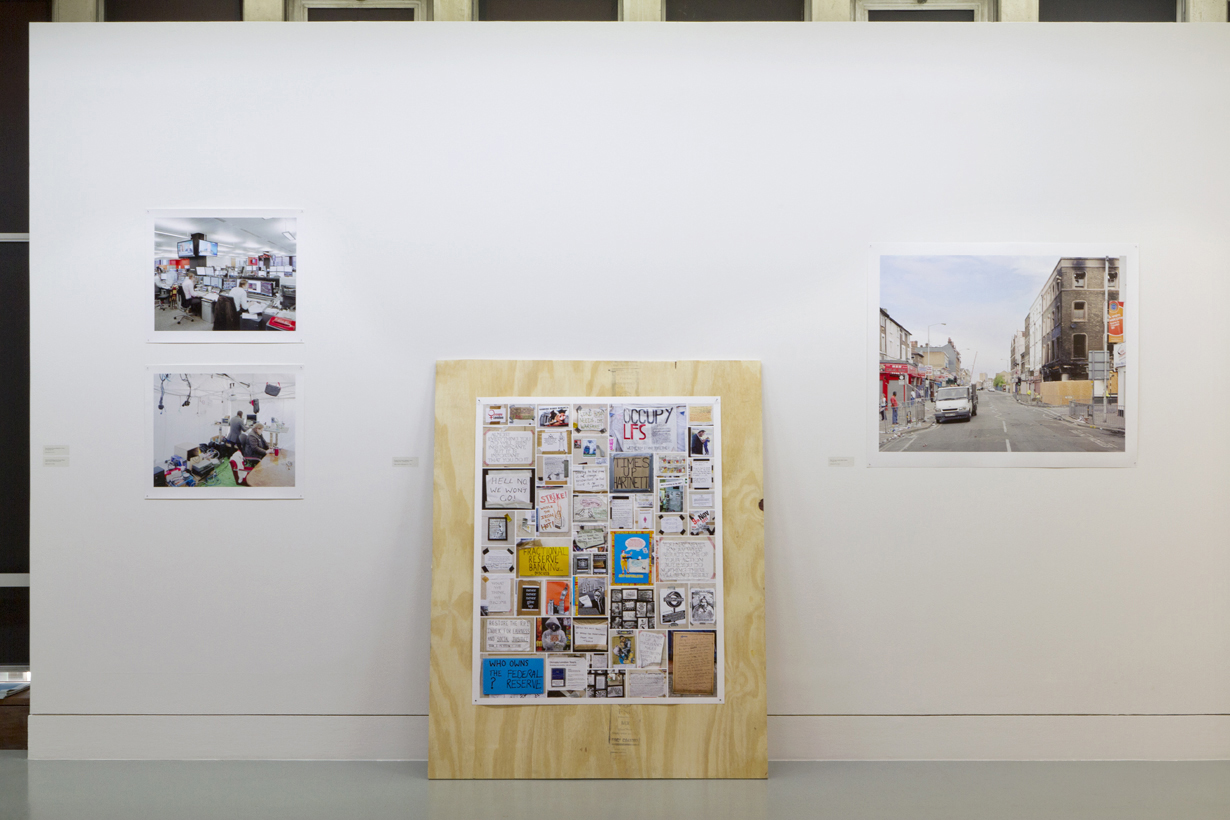
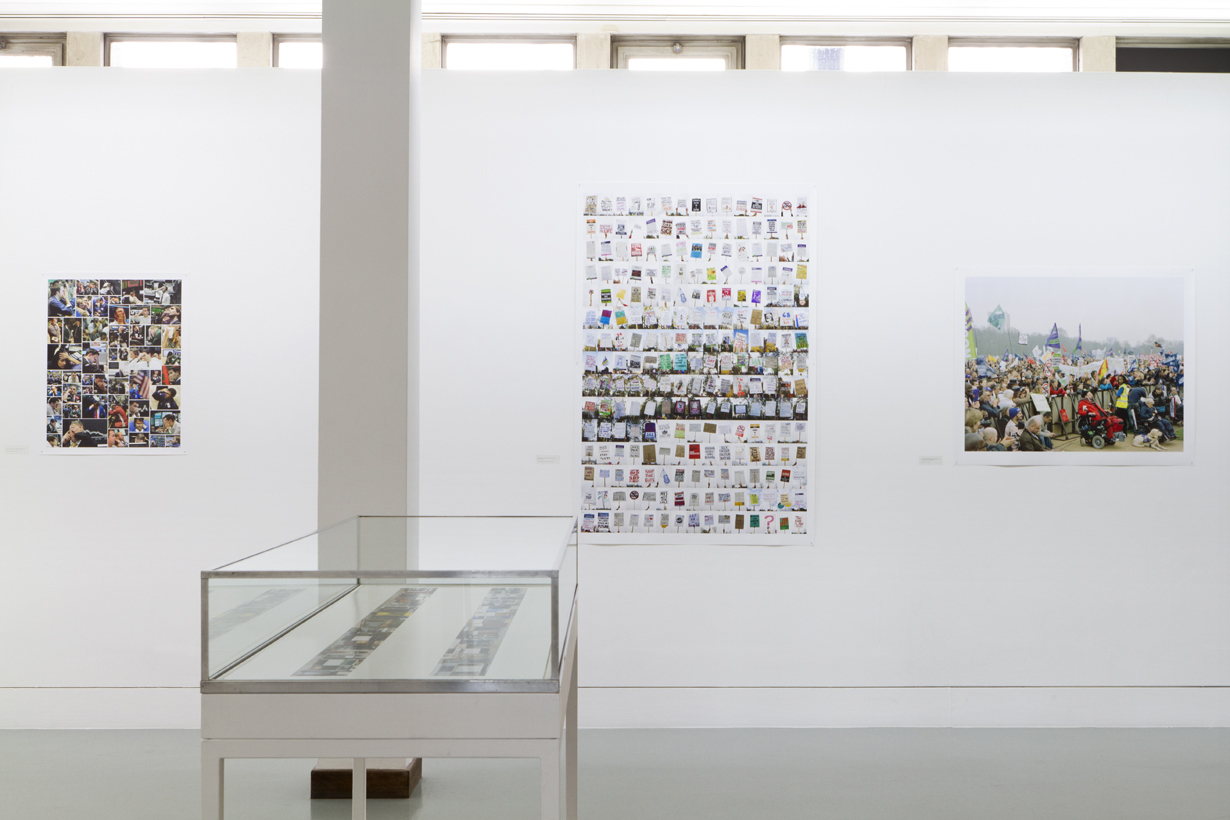
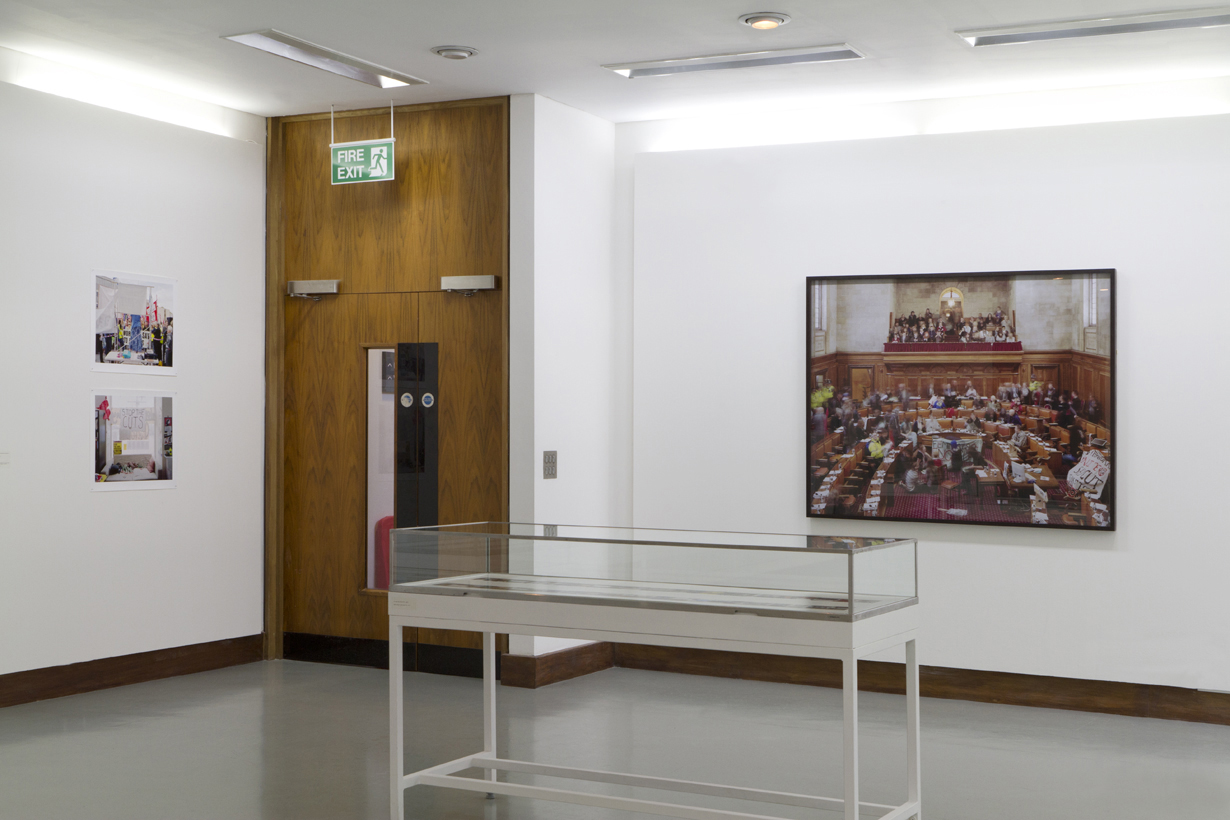
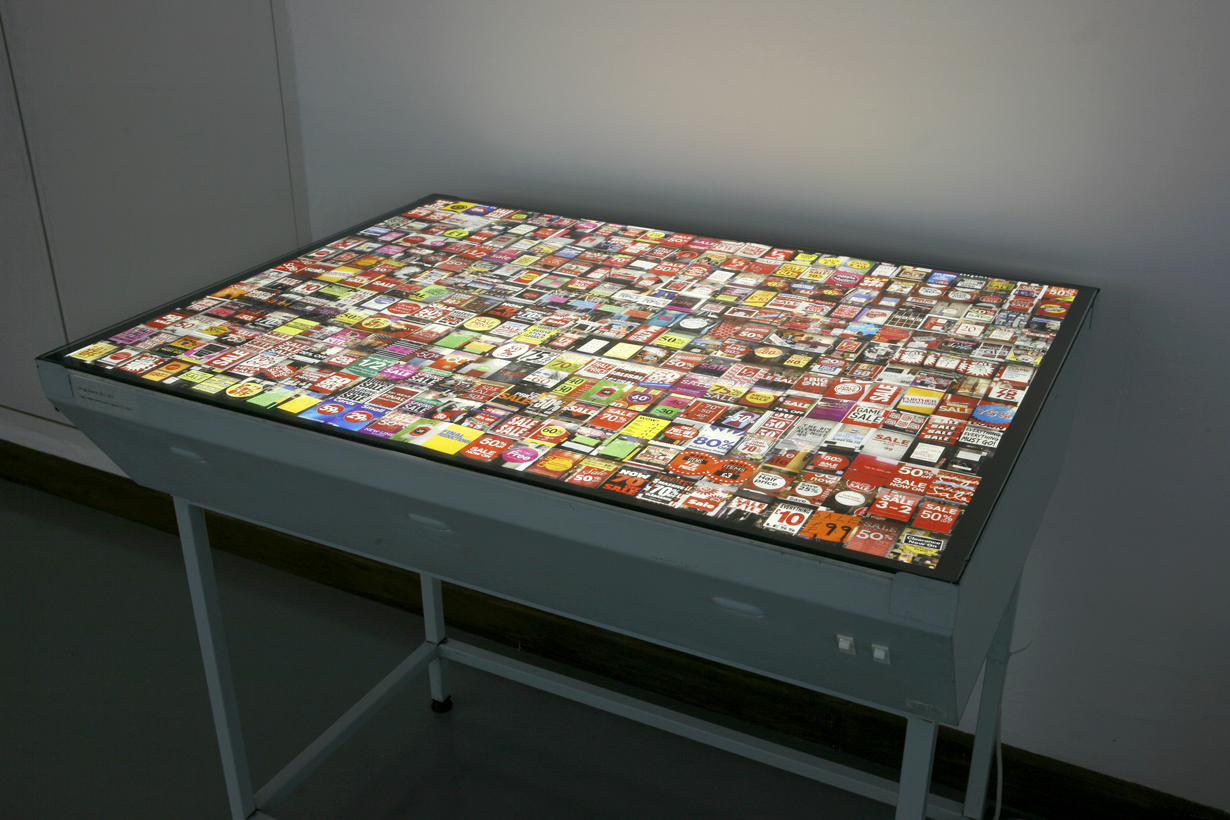
Alongside the exhibition, a participatory space has been set up where visitors are invited to share their thoughts and experiences. Why not get involved?
If you would like the opportunity to share your experiences of the recession and its effects, you can leave a message on the Public Wall in the gallery, or via twitter using the hashtag #LetThisBeASign.
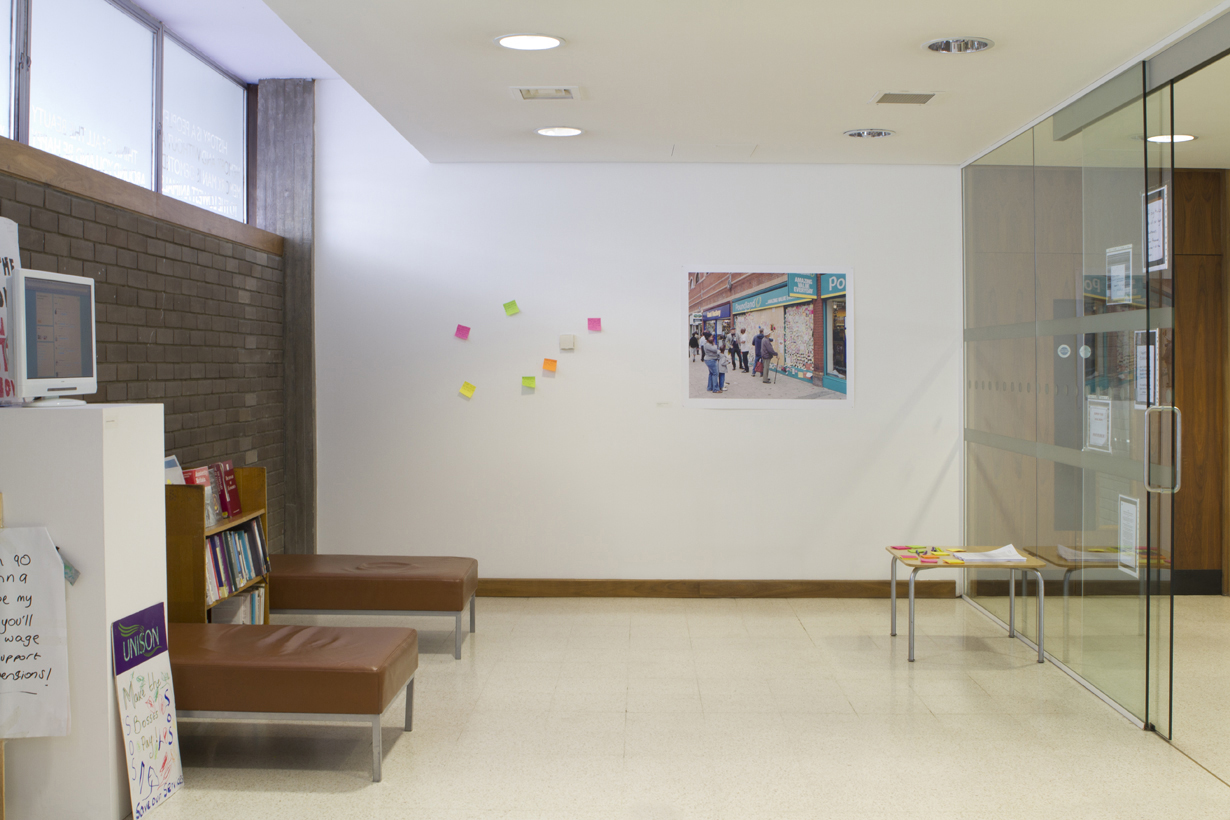
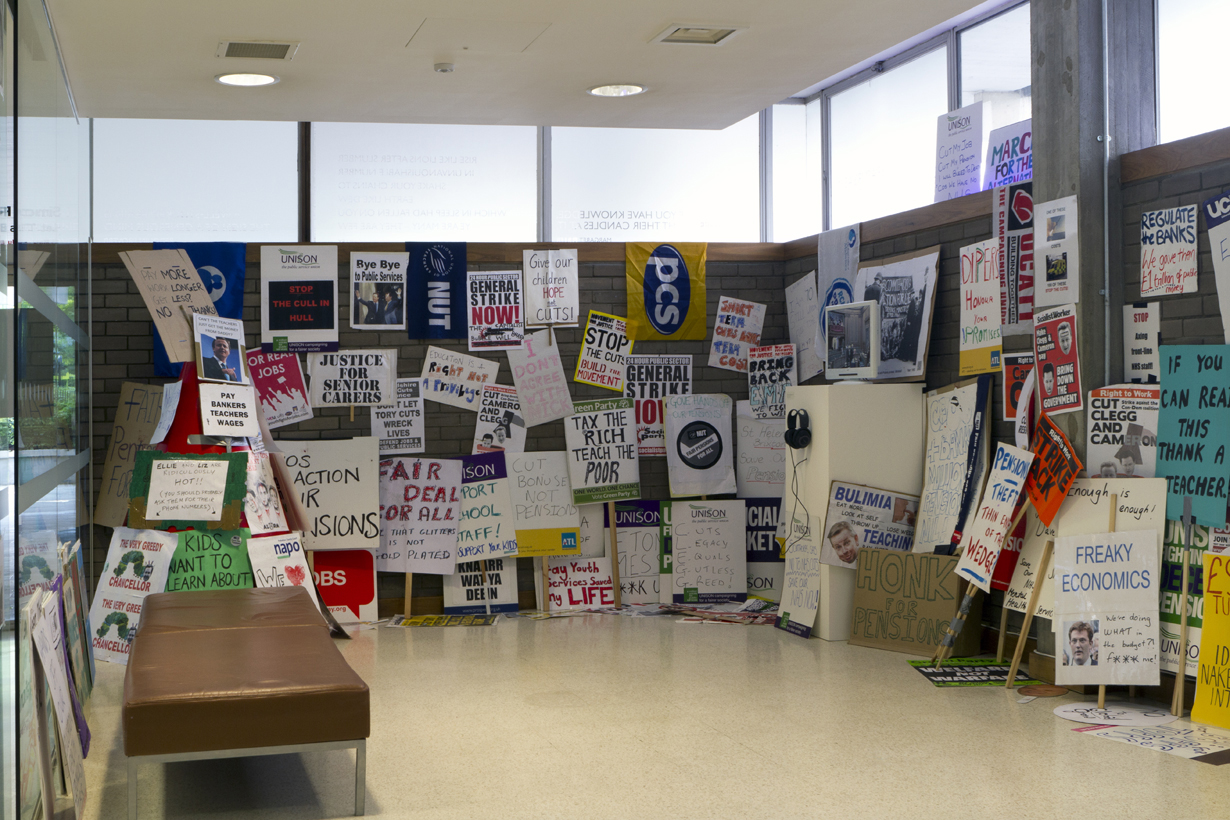
Here is the exhibition text:
One of the ways we remember an economic crisis is through its images. When we recall Depression-era America, we think of the black-and-white portraits of men in bread lines wearing placards that beg for work. Recalling Thatcher’s Britain, we see news pictures of the miners’ strike or stolen moments from the inside of dole offices. While barely a day goes by without more grim economic news, the current recession has been largely invisible, perhaps due to the challenges of representing abstract monetary systems or because the outward signs of today’s economic struggles are hard to capture without resorting to cliché, even though the eventual effects – a lost job, a vanishing pension, cut backs to social services – are intensely personal and painful.
Over the past eighteen months Simon Roberts, who was commissioned as the official Election Artist by the House of Commons in 2010, has attempted to cut through the statistics and abstractions to explore different ways of representing the effects of these changes on the landscape. In this new series of work he follows in the humanist tradition – employed by some of the most influential British documentary photographers of the last century – whilst incorporating the signs, iconography and language that have become so much a part of this ‘era of austerity’.
His approach is multi-disciplinary, using video, text and objects such as protest banners, as well as digital collages, in an attempt to record our new predicament. The Credit Crunch Lexicon, for example, is a text-based work, which draws upon the diversity of economic, political and philosophical terminology that has now become part of our vernacular. Arranged alphabetically to create a form of concrete poetry, the words and phrases scrutinize the miasma of rhetoric, hyperbole and, sometimes contradictory terms used to describe the credit crunch. In other pieces Roberts captures the more visible manifestations of economic change, from the omnipresent sales signs in shop windows and shuttered high street stores to the increase in union strikes, student sit-ins and the manifestation of the Occupy encampments which focused its protest against corporate greed. There are photographs, too, taken inside city halls around the country, where the 2011/12 annual budgets were agreed and major cuts signed off.
This exhibition aims to convey a multitude of voices and provide an incisive depiction of contemporary British reality. Our means of organising protests and campaigns may have become more technologically sophisticated, but our means of self-expression: camps, banners, graffiti remains straightforward, rooted as they are in our personal experience, our sense of justice, our vulnerability and our expectations of those in positions of power.
As is common in his practice, Roberts has added a collaborative element to this exhibition encouraging public participation.
As the new financial year progresses with continued chaos in the Eurozone and recovery slower than predicted, there is no guarantee that the fiscal landscape will improve. In this sense, Roberts’ work is unresolved. The installation is ongoing, mutable and subject to all of our fears and desires.
A colour newspaper, conceived and published by Roberts, will be available during the exhibition.
A photograph from my upcoming exhibition at Swiss Cottage Gallery Let This Be a Sign is featured in current issue of Wonderland magazine.
Today the New York Times Magazine online have published a piece about my collection of protest posters, along with a short interview.